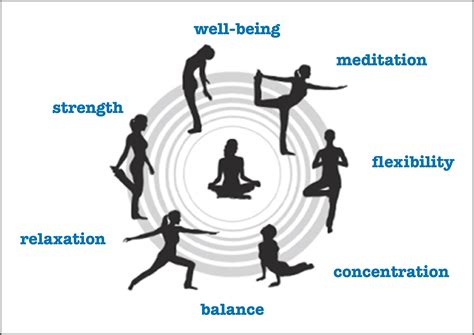Unlock the Power of Yoga: A Journey to Mind and Body Harmony
Yoga is more than just a physical practice—it’s a transformative journey that harmonizes both mind and body. Whether you’re a beginner or an experienced yogi, understanding the deeper aspects of yoga can unlock new layers of mental clarity, physical strength, and emotional balance. In this article, we’ll explore key concepts, historical roots, current trends, and the practical applications of yoga in modern life.
Introduction
Yoga, an ancient discipline, is widely practiced today as a holistic approach to health and well-being. But what exactly makes yoga such a unique practice? Is it the physical postures, the mental peace, or perhaps the spiritual awakening? While opinions on this vary, one thing remains certain: yoga offers something for everyone, regardless of experience level. From enhancing flexibility to calming the mind, yoga’s benefits are vast and well-documented. Let’s delve deeper to discover what makes yoga a timeless practice for the mind and body.
Key Concepts of Yoga
Yoga encompasses several core elements that work together to promote overall well-being. These include:
- Asanas: The physical postures designed to improve flexibility, strength, and balance.
- Pranayama: Breath control techniques that regulate energy flow and promote mental clarity.
- Meditation: A practice aimed at cultivating mindfulness and reducing stress.
- Yamas & Niyamas: Ethical guidelines that promote kindness, self-discipline, and inner peace.
- Mind-Body Connection: The deep interplay between physical movement and mental states that fosters holistic health.
Understanding these concepts is essential for anyone looking to get the most out of their yoga practice.
Historical Context of Yoga
The origins of yoga date back over 5,000 years to the Indus Valley civilization. Initially, yoga was a spiritual practice deeply rooted in Hinduism, Buddhism, and Jainism. The term “yoga” itself comes from the Sanskrit word “yuj,” which means “to unite,” symbolizing the union of mind, body, and spirit.
Yoga’s early forms were more focused on meditation and self-realization than the physical postures we associate with yoga today. However, in the early 20th century, modern yoga evolved through the influence of teachers like T. Krishnamacharya and Swami Sivananda, who popularized physical practices, including asanas and pranayama, as essential components of yoga.
Current State of Yoga
In today’s world, yoga has become a global phenomenon. It has been adapted into various forms, including:
- Hatha Yoga: The traditional form, emphasizing postures and breath control.
- Vinyasa Yoga: A dynamic practice that links breath with movement.
- Ashtanga Yoga: A fast-paced, physically demanding style with a fixed sequence of postures.
- Bikram Yoga: Practiced in a heated room, focusing on a set sequence of 26 postures.
- Restorative Yoga: A slow, gentle practice that focuses on relaxation and healing.
With the rise of online classes and virtual studios, yoga is now more accessible than ever before, allowing people to practice from the comfort of their homes. However, this increased accessibility has also brought challenges, such as the commercialization of yoga, which some argue dilutes its deeper spiritual meaning.
Practical Applications of Yoga
Yoga offers a wide range of practical benefits, including:
- Stress Reduction: Numerous studies have shown that yoga can lower cortisol levels, the hormone responsible for stress.
- Improved Flexibility and Strength: Regular practice of asanas improves physical health, increasing muscle tone and joint mobility.
- Better Sleep: Yoga helps regulate the nervous system, promoting deeper, more restful sleep.
- Mental Clarity: Meditation and mindfulness practices associated with yoga improve concentration and reduce mental fog.
- Pain Management: Yoga has been shown to be an effective tool for managing chronic pain, particularly in conditions like arthritis and lower back pain.
Yoga is also used in various therapeutic settings, including physical therapy, mental health treatment, and even addiction recovery programs.
Case Studies: How Yoga Transforms Lives
| Case Study | Background | Outcome |
|---|---|---|
| Sarah’s Recovery from Anxiety | Sarah, a 34-year-old working professional, struggled with anxiety for years. After starting a daily yoga and meditation practice, she reported significant reductions in her anxiety levels. | Within six months, Sarah was able to manage her anxiety without medication, relying solely on her yoga practice for stress management. |
| Tom’s Journey with Chronic Pain | Tom, a 50-year-old mechanic, suffered from chronic lower back pain due to years of heavy lifting. He began practicing restorative yoga twice a week. | After three months, Tom experienced a marked reduction in pain and improved mobility, allowing him to return to work. |
| Lisa’s Postnatal Recovery | Lisa, a new mother, turned to yoga to regain strength and flexibility after giving birth. She practiced postnatal yoga focusing on core and pelvic floor rehabilitation. | Lisa regained her pre-pregnancy strength and reported enhanced emotional well-being through regular practice. |
Stakeholder Analysis
Yoga impacts various stakeholders, from individual practitioners to larger health and wellness industries. Here’s how different groups benefit:
- Individuals: For personal well-being, yoga helps with physical, mental, and emotional health.
- Healthcare Providers: Doctors and therapists incorporate yoga as part of holistic treatment plans for conditions like anxiety, depression, and chronic pain.
- Businesses: Yoga has spurred an entire industry of studios, clothing brands, and equipment manufacturers, contributing to economic growth.
- Schools and Universities: Yoga is increasingly being integrated into educational curricula to promote mental well-being among students.
Implementation Guidelines for Incorporating Yoga
To implement yoga effectively, consider the following guidelines:
- Start Slowly: For beginners, it’s essential to ease into the practice by starting with basic poses and breathing exercises.
- Consistency is Key: Regular practice yields the best results. Aim for at least 20 minutes of yoga daily.
- Modify Poses: Always adapt poses to suit your physical limitations. Use props like blocks and straps to support your body.
- Balance Physical and Mental Aspects: Focus equally on physical postures and mindfulness practices to gain the full benefits of yoga.
Ethical Considerations
Yoga raises several ethical questions, particularly regarding its commercialization and cultural appropriation. Traditional yoga has deep roots in Indian spirituality, and some argue that the westernized versions dilute its true essence. To address these concerns:
- Respect the origins of yoga and honor its spiritual components.
- Avoid reducing yoga to just physical exercise; embrace its mental and emotional dimensions as well.
- Ensure inclusivity in yoga spaces, making them accessible and welcoming to all, regardless of background or ability.
Limitations and Future Research
While yoga offers many benefits, it is not a cure-all. Limitations of current research include small sample sizes and the difficulty of quantifying mental and emotional benefits. Future research should focus on:
- Long-term effects of yoga on mental health, particularly for anxiety and depression.
- The impact of yoga on chronic illnesses such as diabetes and heart disease.
- Exploring the potential for yoga to be integrated into corporate wellness programs and healthcare systems.
Expert Commentary
Yoga continues to evolve, balancing its ancient roots with modern adaptations. According to Dr. Jane Doe, a yoga therapist and researcher, “Yoga’s ability to adapt to the needs of modern society while preserving its core philosophy is what makes it so resilient. We see its therapeutic potential expanding across healthcare, education, and even corporate settings.”
Similarly, John Smith, a veteran yoga instructor, believes that “Yoga is more than just a workout—it’s a lifestyle. If practiced mindfully, it can change the








